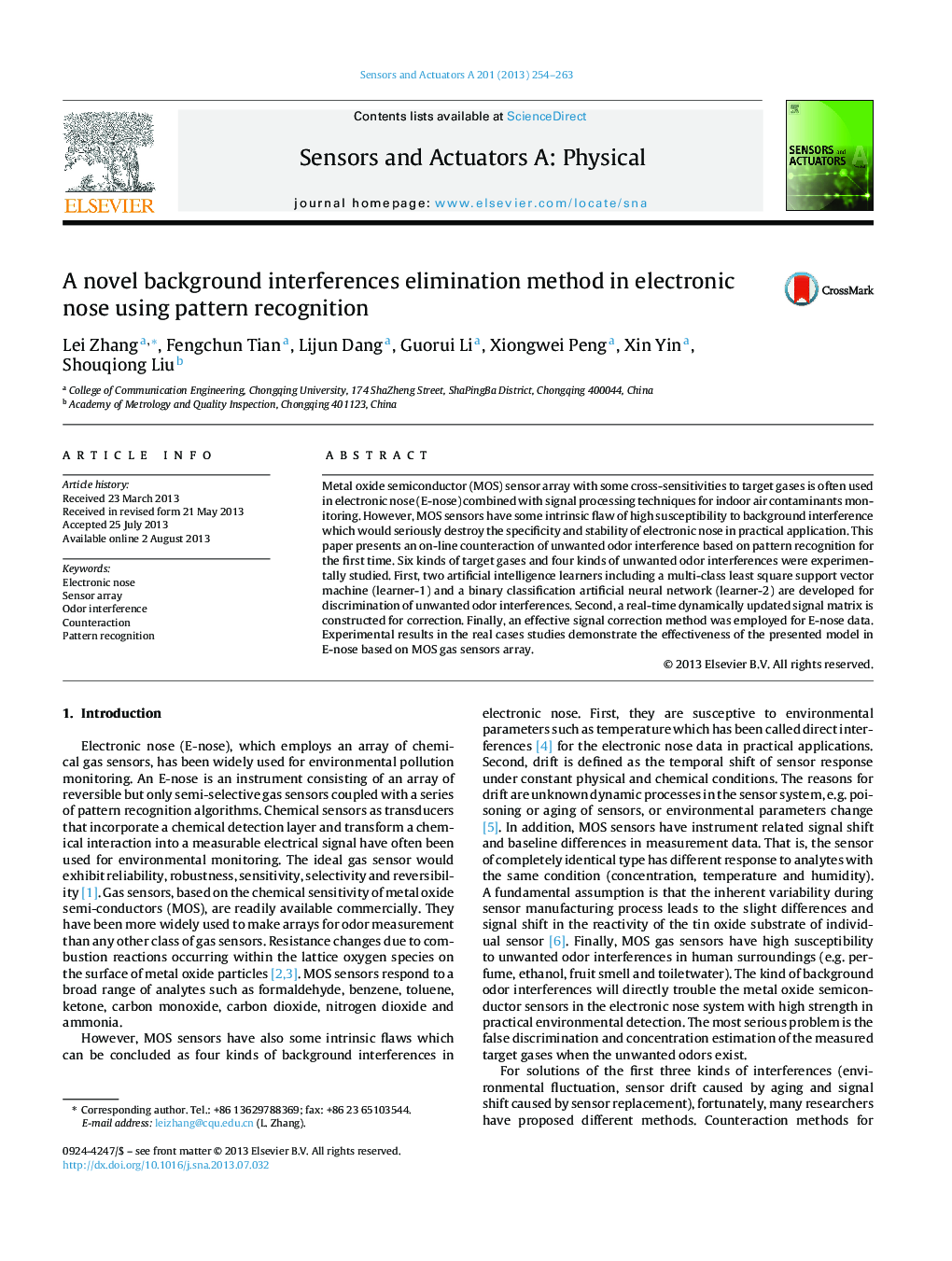| Article ID | Journal | Published Year | Pages | File Type |
|---|---|---|---|---|
| 7137914 | Sensors and Actuators A: Physical | 2013 | 10 Pages |
Abstract
Metal oxide semiconductor (MOS) sensor array with some cross-sensitivities to target gases is often used in electronic nose (E-nose) combined with signal processing techniques for indoor air contaminants monitoring. However, MOS sensors have some intrinsic flaw of high susceptibility to background interference which would seriously destroy the specificity and stability of electronic nose in practical application. This paper presents an on-line counteraction of unwanted odor interference based on pattern recognition for the first time. Six kinds of target gases and four kinds of unwanted odor interferences were experimentally studied. First, two artificial intelligence learners including a multi-class least square support vector machine (learner-1) and a binary classification artificial neural network (learner-2) are developed for discrimination of unwanted odor interferences. Second, a real-time dynamically updated signal matrix is constructed for correction. Finally, an effective signal correction method was employed for E-nose data. Experimental results in the real cases studies demonstrate the effectiveness of the presented model in E-nose based on MOS gas sensors array.
Related Topics
Physical Sciences and Engineering
Chemistry
Electrochemistry
Authors
Lei Zhang, Fengchun Tian, Lijun Dang, Guorui Li, Xiongwei Peng, Xin Yin, Shouqiong Liu,
